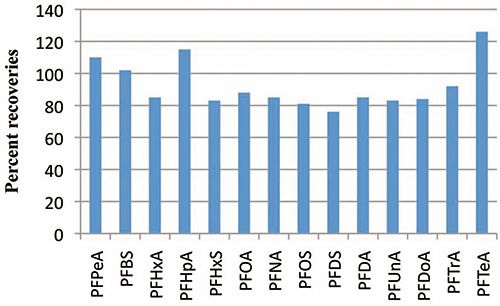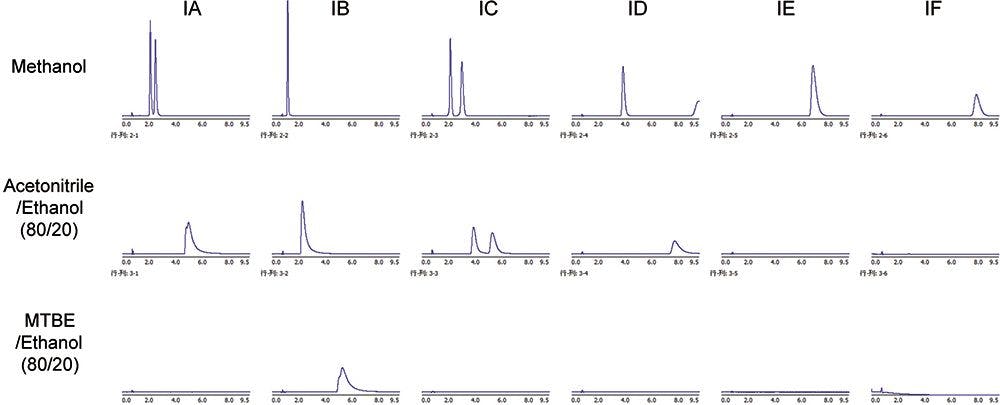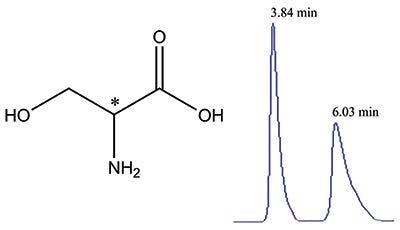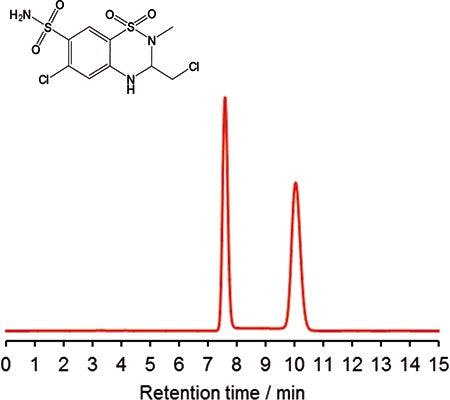Automated Low Background Solid-Phase Extraction System for Perfluorinated Compounds in Water
The Application Notebook
Perfluoralkylated substances is a general term used to describe substances which are largely comprised of or contain a perfluorinated or polyfluorinated carbon chain moiety such as F(CF2)n- or F(CF2)n-(C2H4)n. PFOS and other perfluorinated compounds are widely used in industrial and consumer applications including stain-resistant coatings for textiles, leather, and carpets, grease-proof coatings for paper products approved for food contact, firefighting foams, mining and oil well surfactants, floor polishes, and insecticide formulations. In recent years, there has been increasing concern over the levels of perfluorinated and polyfluorinated chemicals, such as PFOS (perfluorosulfonate) and PFOA (perfluoro-octanoicacid), in the global environment and their fate and possible adverse effects in the environment.

Figure 1: Recoveries for a number of perfluorinated compounds.
In animal studies, some PFCs disrupt normal endocrine activity; reduce immune function; cause adverse effects on multiple organs, including the liver and pancreas; and cause developmental problems in rodent offspring exposed in the womb. Data from some human studies suggests that PFCs may also have effects on human health, while other studies have failed to find conclusive links. Additional research in animals and in humans is needed to better understand the potential adverse effects of PFCs for human health.

Figure 2: Background concentrations for a number of perfluorinated compounds.
Two compounds in particular, perfluorooctane sulphonate (PFOS) and perfluorooctanoic acid (PFOA), represent the final environmental degradation products of (and contaminants in) a wide range of other perfluorinated products and have been most extensively studied. PFOS is now subject to varying but increasing levels of control in a number of countries. PFOA, also a widespread contaminant but with a far lower bioaccumulation potential is still under evaluation.
Procedure
Five hundred mL water samples were spiked with 25 μL of 1 μg/mL PFC standard solution. Samples were then loaded onto the FMS TurboTrace® PFC SPE system and passed across a FMS, Inc. PFC cartridge under -12 psi vacuum. After loading, the bottle was rinsed with 25 mL of water and loaded onto the cartridge under negative pressure. The cartridges were dried using nitrogen until no residual water was present, and the cartridges were subsequently eluted with methanol. The extracts were concentrated to 500 μL, after which internal standard was added.The samples were diluted to a final volume of 1 mL of water for LCâMS analysis.
Conclusion
The FMS TurboTrace PFC SPE system and the FMS, Inc. PFC cartridge both specifically designed for the analysis of perfluorinated componds produces reliable, reproducible results for perfluorinated compounds in water. The system, by design, has very low background PFC allowing for analysis of samples without any significant interference.

FMS, Inc.
580 Pleasant Street Watertown, MA 02472
tel. (617) 393-2396, fax: (617) 393-0194
Website: www.fmsenvironmental.com

Separation of Ultra-Short and Long Chain PFAS Compounds Using a Positive Charge Surface Column
December 11th 2024A separation of ultra-short and long chain PFAS (C1-C18) is performed on a HALO®PCS Phenyl-Hexyl column along with a HALO®PFAS Delay column which demonstrates excellent retention for both hydrophilic and hydrophobic analytes.















